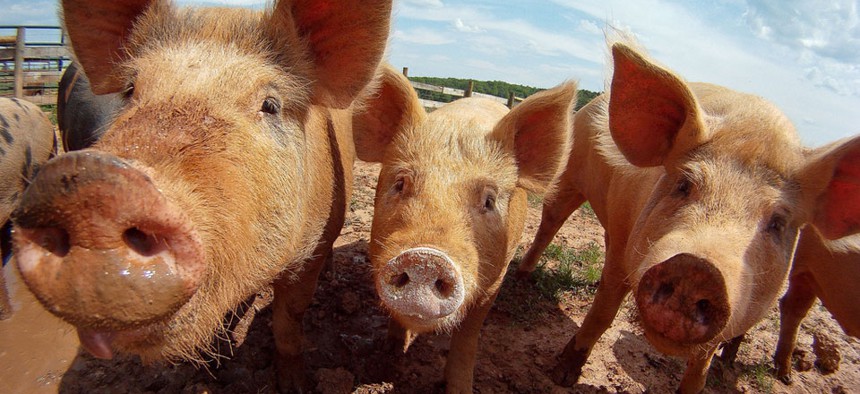
United States Department of Agriculture
USDA Pork Inspection Program Misses Contaminated Meat
Three of the five hog plants enrolled were among the nation's top 10 worst offenders in terms of health and safety violations.
A pilot program for inspecting meat launched by the Department of Agriculture has repeatedly failed to prevent contaminated meat, according to a lengthy report in The Washington Post. Five U.S. pork processing plants enrolled in the Hazard Analysis and Critical Control Point-based Inspection Models Project (HIMP) in 1997, which both sped up processing lines by up to 20 percent and allowed companies to employ their own inspectors instead of ones employed by the government.
Despite the program being in place for more that 15 years, the USDA still has yet to publish a report on whether or not the program has been working in increasing production and reducing cost to the federal government.
According to the new report, of the five hog plants enrolled in the pilot program, three were among the nation's top 10 worst offenders in terms of health and safety violations. The Post cites reports from inspectors who say that attempts to slow the line or raise concerns have been ignored or met with anger.






